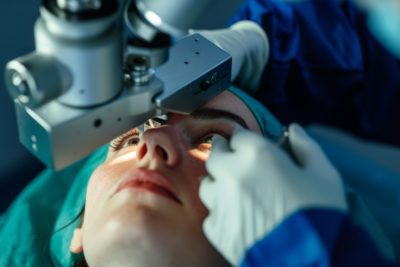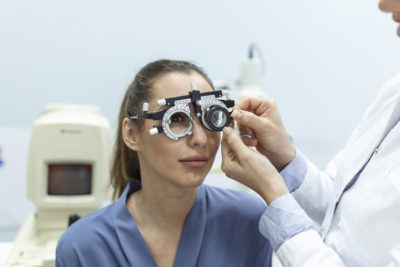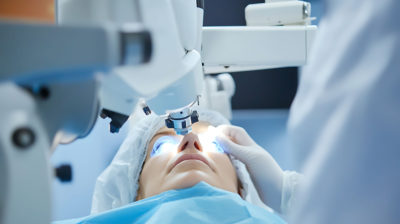Aging is a normal process which changes many aspects of our body functions including our eyes. When we are young we can see different distances sharply as the lens inside the eye is flexible and can change its shape to adjust according to the distance. Over the years the eye’s ability to change the shape of lens decreases and therefore people who could read well when they were younger developed a need for plus-glasses or reading glasses starting middle age. Although reading glasses can correct the problem, most people find it frustrating to have to use spectacles whenever they indulge in any of the near vision activities like looking at a message on their cell phones or reading newspaper.
Mr. Mohan, one such person who lives a very active life and was constantly getting bothered with his glasses. As he turned 47 years old, he not only required his distance glasses but also reading glasses. He wanted an option to get rid of both his numbers.
Fortunately there are now options available that can help improve the situation for people wanting to get rid of distance and reading glasses.
Mono-vision Lasik (Blended Vision Lasik): This is a great option for most patients. In this the dominant eye is corrected for distance and the other eye is adjusted for reading correction. This is suitable for those who are easy going and do not look for perfection in everything. Before opting for this a trial of contact lenses is done where one eye contact lens is adjusted for distance correction and the other eye for reading. If patient feels comfortable with the vision then mono-vision Lasik is planned. Even though my initial assessment of Mohan was that he was a perfectionist but when we gave him the trial of mono-vision contact lenses he was thrilled. So he went ahead and got the Mono-vision Lasik done and today he is enjoying a spectacle free vision.
Presby-Lasik: This is a type of Lasik where different powered zones are created on the cornea. Even though it was believed to be a promising technology but the results have failed to demonstrate that. So this form of correction is slowly becoming redundant and is not preferred by most Lasik surgeons now.
Multifocal Lens Implantation: This is an option where patients own lens is removed and replaced with a fold able multi focal lens. This surgery is called as Refractive lens exchange. Technically the surgery is similar to cataract surgery. The advantage of this surgery is that once this procedure is done then patient does not need cataract surgery in future. This is unlike other options where cataract surgery will be required once patients own lens turns cloudy with increasing age. This option is better suited for those with farsightedness along with presbyopia or those where early cataract changes have already started. Mr. Sam wanted to get correction of both distance and reading numbers. On evaluation he was found to have early cataract. He opted for this and is very happy with the results and now enjoys his spectacle free life.
Corneal Inlays: It is a newer procedure which is suitable for presbyopic patients with good distance vision, but poor near vision, between the ages of 45 and 60. The tiny lens is implanted in the non-dominant eye into a corneal pocket created by a Femtosecond laser. The device works by blocking unfocused light rays entering the eye. During near work the implant blocks peripheral light rays while allow central light rays to pass through a small opening in the center of the device. This makes near objects and small print less blurry. Most patients report improvement in their vision almost immediately and most can resume their normal activities within a day or two. However still the procedure is not developed enough and requires further refinement to reduce the existing risk of side effects and complications.
Presbyopic (Multifocal) Implantable contact lenses: IPCL is suitable for people between the age of 45 and 55 those who wear glasses for both distance and near vision. IPCL is like a soft contact lens but it is inserted into the eye through a tiny incision. It becomes a part of the eye and is positioned in front of patient’s natural lens. It is made from special acrylic material which is compatible with body and cannot be rejected. The lens is customized and personalized from person to person based on eye measurements and readings. Results are stable over time and there is usually no regression. Another advantage is that unlike Lasik it is a reversible procedure and it does not alter the corneal shape or thickness. It provides excellent quality of vision and fast recovery. Because patient’s natural lens is not touched and it remains in the eye, patient’s accommodation is preserved.
Most of these procedures are not recommended for patients with severe dry eye or those having an active eye infection. Even those with corneal abnormalities related to thin cornea or irregular shape of the cornea are advised against these procedures. Additionally those with recent or recurring herpetic eye disease, having uncontrolled glaucoma, uncontrolled diabetes; or active autoimmune or connective tissue disease are advised against any of these procedures.









